Carl E. Olson's Blog, page 114
January 10, 2014
"Celebrate Life!" Save 20% on select pro-life books & films
Celebrate Life!

“Give us the grace – When the sacredness of life before birth is attacked,
to stand up and proclaim that no one ever has
the authority to destroy unborn life.”
- Pope John Paul II
It's been 41 years since Roe vs. Wade brought about the legalization of abortion in the US. 41 years is 41 years too long, take a stand for life by coming out to the
40th Annual March for Life.

Promo video for March for Life 2014 by The Blackstone Films
Or, if you're on the West Coast, join Ignatius Press at the
10th Annual Walk for Life West Coast,
co-founded by our own beloved Eva Muntean.
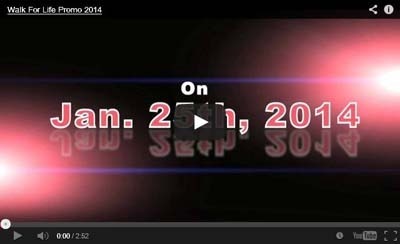
Walk for Life West Coast 2014 promo video
If you are unable to make it to either of these two events, find a local March for life, at
MarchForLifeFinder.com
Offer ends Wednesday, January 15th, 2014 at 12:00 midnight EST.
These prices are available online only through Ignatius.com
20% off Great Pro-Life Titles from Ignatius Press!
Books
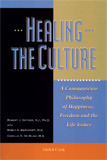 Healing the Culture
Healing the Culture
Fr. Robert Spitzer, SJ
Father Spitzer, President of the Magis Institute and former President of Gonzaga University, has been using the principles in this book to educate people of all backgrounds in the philosophy of the pro-life movement. The tremendous positive response he has received inspired him to start the Life Principles Institute. This book is one of the key resources used for this program.
This work effectively draws out the connections between personal attitudes toward happiness and the meaning of life, and the larger cultural issues such as freedom and human rights. Relying on the wisdom of the ages and respecting the human persons' unique capacity for rational analysis, this work offers definitions of the key cultural terms affecting life issues, including Happiness, Success, Love, Suffering, Quality of Life, Ethics, Freedom, Personhood, Human Rights and the Common Good. Also available as an e-book.
Regular price: $17.95, sale price: $14.36
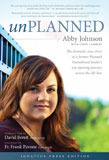 Unplanned
Unplanned
Abby Johnson
Abby Johnson quit her job in October 2009. That simple act became a national news story because Abby was the director of a Planned Parenthood clinic in Texas who, after participating in her first actual abortion procedure, walked across the road to join the Coalition for Life.
Unplanned is a heart stopping personal drama of life-and-death encounters, a courtroom battle, and spiritual transformation that speaks hope and compassion into the political controversy that surrounds this issue. Telling Abby's story from both sides of the abortion clinic property line, this book is a must-read for anyone who cares about the life versus rights debate and helping women who face crisis pregnancies.
Hardcover:
Regular price: $19.95, sale price: $15.96
Paperback:
Regular price: $14.99, sale price: $11.99
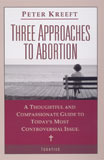 Three Approaches to Abortion
Three Approaches to Abortion
Peter Kreeft
Abortion has been and remains a crucial issue in American politics. Unfortunately, many Americans don’t see abortion for the evil it is—the unjust killing of millions of human beings each year. Even many Catholics have been confused by the “pro-choice” (read: pro-abortion) rhetoric of those who say that they personally accept Catholic teaching about abortion, but they can’t impose it on others.
You’ve heard argument after argument about this topic. Maybe you think there is nothing more to say. Well, there is...
Three Approaches to Abortion, by popular author Peter Kreeft, cuts through the nonsense of the “pro-choice” position. He shows in an irrefutable way why abortion is evil and why it’s illogical to support abortion rights while claiming to be “personally opposed to abortion.” Kreeft’s commonsense approach to the issue, his lucid arguments, easy-to-grasp illustrations and examples, and his thoughtful dialogue between a pro-lifer and a “pro-choicer” make this book an invaluable tool in the pro-life cause. . Also available as an e-book.
Regular price: $11.95, sale price: $9.56
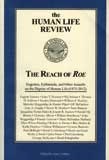 The Reach of Roe
The Reach of Roe
Editor: Anne Conlon
This new collection of essays from the Human Life Review is a companion volume to The Debate Since Roe (2010), a primer designed to convey the facts and arguments on abortion and to chronicle the decades-long struggle of the pro-life movement to keep the issue before the American public. In The Reach of Roe: Eugenics, Euthanasia, and Other Assaults on the Dignity of Human Life, the focus is on culture-specifically, how profoundly the 40-year-old Roe v. Wade decision legalizing abortion on demand has permeated our nation's institutions: legal, medical, scientific, religious, educational. While essays on euthanasia and physicianassisted suicide-along with in vitro fertilization, cloning, andembryonic stem-cell research-predominate, the reader will also find considerations of subjects as seemingly diverse as pornography, the U.S. Constitution, and the "inhumanity" that often attends being fired from a job in corporate America today. John Noonan, Lino Graglia, Harold O.J. Brown, Rita Marker, Francis Canavan, Steven Mosher, John Muggeridge, Ellen Wilson Fielding, Maria McFadden, Wesley J. Smith, John Finnis, and David Klinghoffer are just some of the 34 committed pro-life writers whose important work is featured here.
Regular price: $14.95, sale price: $11.96
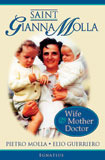 Saint Gianna Molla
Saint Gianna Molla
Pietro Molla
This is the inspiring story of a canonized contemporary woman. Gianna Molla (1923-1962) risked her life in order to save her unborn child. Diagnosed with uterine tumors during her fourth pregnancy, she refused a hysterectomy that would have aborted the child, and opted for a riskier surgery in an attempt to save the baby. Herself a medical doctor, Molla did give birth to the child, but succumbed to an infection.
A unique story, co-authored by her own husband, with his deeply moving personal insights of the heroic witness, love, sacrifice and joy of his saintly wife. A woman for all times and walks of life, this moving account of the multi-faceted, selfless St. Gianna Molla, who made the ultimate sacrifice to save her unborn child, will be an inspiration to all readers. Illustrated Also available as an e-book.
Regular price: $11.95, sale price: $9.56
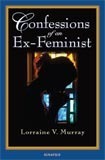 Confessions of an Ex-Feminist
Confessions of an Ex-Feminist
Lorraine V. Murray
Confessions is the honest and heart-rending account of a woman who was born into a Catholic family, attended parochial schools and fully embraced the beliefs of her faith, but ran into major roadblocks in college. Amidst the radical feminist college environment of the 1960’s, she lost her faith, and her morality, jumping aboard the bandwagon of “free love.”
When she discovered she was pregnant, Murray followed the route that feminists offer as a solution for unmarried women. Much to her surprise, her abortion was a shattering emotional experience, which she grieved over for years. It was the first tragic chink in her feminist armor.
Later in her forties, Murray experienced a mysterious series of events in which it seemed that “someone” was inviting her back to God. The mysterious calls came from different ports, including nature, books and other people. Gradually, she realized that the One seeking her was Christ, and the place He was calling her to was the Catholic Church. Eventually realizing it was only in the Church that she would find what she was seeking — the person of Christ and his love and mercy — Murray returned to the Church, and finally found healing and forgiveness for the abortion. Also available as an e-book.
Regular price: $12.95, sale price: $10.36
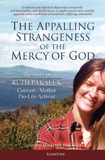 The Appalling Strangeness of the Mercy of God
The Appalling Strangeness of the Mercy of God
Ruth V.K. Pakaluk
This book is the powerful story of an amazing woman, Ruth Pakaluk, who converted to Catholicism at Harvard, married her college sweetheart and joyfully welcomed seven children. She became a renowned pro-life leader and brilliant debater, who was struck with breast cancer and died at the young age of forty-one.
Ruth Pakaluk exemplified the powerful integrity of someone who lived what she believed. She was steadfastly committed to Christ and to the culture of life, and this commitment was manifested in her consistent affirmation of life in her family, in society and even in the face of her own death. Peter Kreeft, well known Professor of Philosophy and author, described Ruth as the best, most effective and inspiring pro-life speaker he had ever heard. She was such a compelling, articulate pro-life debater that eventually Planned Parenthood spokeswomen refused to spar with her in public.
All Ruth's virtues revealed in this book - her love as a devoted wife and mother, her zeal for the truth, and her faith & hope while battling a terminal illness - offer inspiration and encouragement to anyone striving to put Christian faith into action. Also available as an audio download and e-book.
Regular price: $16.95, sale price: $13.56
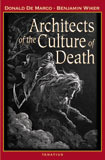 Architects of the Culture of Death
Architects of the Culture of Death
Donald DeMarco & Benjamin Wiker
The phrase, "the Culture of Death", is bandied about as a catch-all term that covers abortion, euthanasia and other attacks on the sanctity of life. In Architects of the Culture of Death, authors Donald DeMarco and Benjamin Wiker expose the Culture of Death as an intentional and malevolent ideology promoted by influential thinkers who specifically attack Christian morality's core belief in the sanctity of human life and the existence of man's immortal soul. In scholarly, yet reader-friendly prose, DeMarco and Wiker examine the roots of the Culture of Death by introducing 23 of its architects, including Ayn Rand, Charles Darwin, Karl Marx, Jean-Paul Sartre, Alfred Kinsey, Margaret Sanger, Jack Kevorkian, and Peter Singer.
Still, this is not a book without hope. If the Culture of Death rests on a fragmented view of the person and an eclipse of God, the future of the Culture of Life relies on an understanding and restoration of the human being as a person, and the rediscovery of a benevolent God. The personalism of John Paul II is an illuminating thread that runs through Architects, serving as a hopeful antidote. Also available as an e-book.
Regular price: $17.95, sale price: $14.36
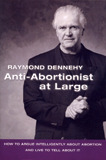 Anti-Abortionist at Large
Anti-Abortionist at Large
Raymond Dennehy
Dennehy, a professor of Philosophy at the University of San Francisco, has debated pro-abortionists with great success in hostile environments. This is his inspiring personal account of nearly four decades of debating abortion on radio, television, and university campuses.
“The most articulate and forceful voice in the United States to explain and critique the abortion question in all its ramifications is that of Professor Raymond Dennehy.”
—James V. Schall, S.J., Georgetown University
“If you thought that philosophical courage ended when Socrates drank the hemlock, read Ray Dennehy’s personal testament about how to debate abortion intelligently and live to tell about it. This book is a classic. This is more than a handbook about how to debate the abortion issue; it is a personal witness…”
—Peter Redpath, St. John’s University
Regular price: $19.95, sale price: $15.96
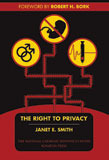 The Right to Privacy
The Right to Privacy
Janet E Smith
Janet Smith, well-known philosophy professor and writer, presents a critical look at the meaning of the “right to privacy” that has been so often employed by the Supreme Court in recent times to justify the creation of rights not found in the Constitution by any traditional method of interpreting a legal document. Smith shows how these inventions have led to the legal protection of abortion, assisted suicide, homosexual acts, and more. As Judge Bork says it shows that “morals legislation now seems constitutionally impermissible”, and that the counterfeit right to privacy belongs to the genre of the indecipherable and incoherent that no one who wrote the Constitution and the Bill of Rights would have contemplated.
Regular price: $14.95, sale price: $11.96
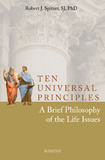 Ten Universal Principles
Ten Universal Principles
Fr. Robert Spitzer, SJ
In Ten Universal Principles: A Brief Philosophy of the Life Issues, Jesuit Father Robert Spitzer sets out, in a brief, yet highly-readable and lucid style, ten basic principles that must govern the reasonable person's thinking and acting about life issues. A highly-regarded philosopher, Father Spitzer provides an intelligent outline for thinking and talking about human life. This book is a powerful tool for persuasively articulating and effectively inculturating a prolife philosophy. Also available as an audio download and e-book.
Regular price: $16.95, sale price: $13.56
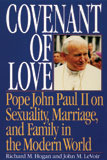 Covenant of Love
Covenant of Love
Fr. Richard Hogan & Bishop John M. Levoir
Pope John Paul II has had a profound theological and personal impact on Catholics and non-Catholics alike. In the scholarly tradition of Saint Augustine and Saint Thomas, he has found a new unity between faith and reason. The study of God, says John Paul, is also the study of humanity. He has come to vigorously insist on the rights and dignity of each human person, and on the divine importance of the family.
John Paul teaches that the keystone of Christian living today is the communion of persons which is the family. Covenant of Love conveys this central message of his pontificate. It explores the influence of Christ on the modern family, human intimacy, and sexuality and illustrates the Pope's response to the violations of that familial communion: materialism, sterilization, pre-marital sex, abortion, polygamy, adultery and lust, contraception and artificial conception, and homosexuality.
Written for the layman as well as for clerics, students, and educators, this volume will enhance the understanding and appreciation of Pope John Paul II's teachings. Covenant of Love, presents the extraordinary new way that John Paul II is using to present a new synthesis of the faith that can be the means of renewing the faith of all Christians and of bringing more people to Christ. It sets out his philosophical and theological design for every Christian who seeks a closer relationship with God--in the person of Christ, in the Church, and in the human heart.Also available as an e-book.
Regular price: $16.95, sale price: $13.56
Films
 Changing Sides
Changing Sides
Can hearts really be changed on the issue of abortion?
This film tells the powerful true story of the conversion of a dedicated Planned Parenthood director to a leading Pro-life Activist. Abby Johnson was the director of the abortion facility that was the launching pad of the bold new pro-life effort - 40 Days for Life.
Abby believed that she was helping women by working for the nation's largest abortion operation, Planned Parenthood. She quickly rose in the ranks to become the director of an abortion facility and was even given an "Employee of the Year" award.
But one Fall morning everything changed.
Regular price: $14.95, sale price: $11.96
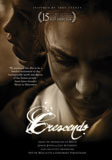 Crescendo
Crescendo
In this multi-award-winning short film, we look into the soul of a German woman whose life in the 18th Century is filled with discordant notes and driven by domestic hardships. Based on an amazing true story, told with beautiful poignancy, "Crescendo" is packed with powerful performances, exquisite imagery and brilliant music. A life-affirming short film by the makers of Bella, with a special introduction by Pattie Mallette, mother of Justin Bieber.
Regular price: $14.95, sale price: $11.96
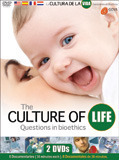 The Culture of Life
The Culture of Life
In the field of Bioethics, many current challenges are becoming increasingly pressing, and they call out for clear answers from scientific and ethical points of view. These programs demonstrate that "The Culture of Life" harmoniously blends scientific progress with a respectful approach vis-a-vis human suffering.
Regular price: $29.95, sale price: $23.96
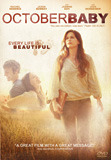 October Baby
October Baby
As the curtain rises, Hannah hesitantly steps onto the stage for her theatrical debut in college. Yet before she can utter her first lines, Hannah-unscripted-collapses in front of the stunned audience.
After countless medical tests, all signs point to one underlying factor: Hannah's difficult birth. This revelation is nothing compared to what she then learns from her parents: she was actually adopted ... after a failed abortion attempt.
Bewildered, angered, and confused, Hannah turns for support to Jason, her oldest friend. Encouraged by his adventurous spirit, Hannah joins his group of friends on a Spring Break road trip, embarking on a journey to discover her hidden past ... and find hope for her unknown future. In the midst of her incredible journey, Hannah finds that life can be so much more than what you have planned.
Regular price: $17.95, sale price: $14.36
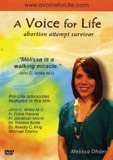 A Voice for Life: The Story of an Abortion Survivor
A Voice for Life: The Story of an Abortion Survivor
In 1977, Melissa Ohden survived a saline abortion procedure and miraculously suffered no physical or mental damage. She returned to the hospital where the abortion attempt was made in 2008 and gave birth to her daughter. She is now a wife and mother who shares her powerful story around the world, making a positive impact on the lives of those who have been touched by abortion. She presents a moving message of hope, healing and forgiveness.
A Voice for Life looks at the abortion issue from the one who was a target of abortion. This pro-life film is designed to inspire women considering an abortion to choose life and carry their pregnancy to full term. It also encourages women who have had an abortion to seek help and find forgiveness, and embrace a new future free of guilt and pain. The film traces Melissa's story through her own words and interviews with her adoptive mother and other family members, as well as prominent pro-life leaders including Dr. John Wilke, Dr. Theresa Burke, Fr. Frank Pavone, Alveda King and Fr. Jonathan Morris.
Regular price: $19.95, sale price: $15.96
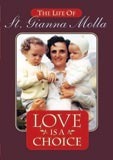 Love Is a Choice
Love Is a Choice
This video documents the heroic life of St. Gianna Molla through interviews with her husband, children, friends, letters, and family mementos. St. Gianna, who sacrificed her life to save her unborn baby, was a mother, a medical doctor, a lover of opera, art, and culture; one who can speak much to our present day especially when family life is threatened on so many fronts.
Regular price: $19.95, sale price: $15.96
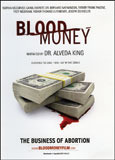 Blood Money
Blood Money
Blood Money is a documentary film narrated by Dr. Alveda King, which exposes the truth behind the Abortion Industry from the Pro Life perspective. The film examines the history of abortion in America. From the inception of Planned Parenthood and the profitability of abortion clinics, to Roe v. Wade, to the denial of when life begins, the fight to save the lives of innocent babies, and the devastating effects it has had on the women that have exercised this "choice". Features Fr. Frank Pavone, Fr. Thomas Euteneuer, Joe Scheidler, Dr. Bernard Nathanson, Norma McCorvey, Carol Everett, and Troy Newman. Featuring the song "Here I Am" by Eric Genuis.
Regular price: $19.95, sale price: $15.96
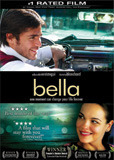 Bella
Bella
The acclaimed, award-winning theatrical hit that tells the moving and life-affirming story about a beautiful waitress in a New York City restaurant facing a crisis pregnancy and unemployment, and the loving support she receives from a kind man with a mysterious past seeking to heal deep wounds of his own. Charismatic actor Eduardo Verastegui and lovely Tammy Blanchard give powerful lead performances in this surprise winner of the coveted “People’s Choice Award” at the prestigious Toronto Film Festival. Filled with many touching moments of human insight, family love, and humor, along with a wonderful music score, Bella is an inspiring film with an uplifting message that leaves a deep impact on its viewers. It belongs in every home.
Regular price: $16.95, sale price: $13.56
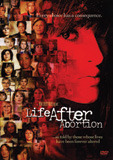 Life after Abortion
Life after Abortion
The untold story from the other victims of abortion. Countless women (and men) have been overwhelmed by post abortion trauma, resulting in fear, anxiety, pain, and guilt. Many suffer in silence for years, even decades after they realize the full toll of their choice. While numerous civic organizations and local churches offer outreach ministries that meet the need of many in crises, a relatively few help women cope with life in the emotionally destructive aftermath of abortion. Go beyond the rhetoric and take a 360 degree look at unplanned pregnancies as told by the women who experienced them. From desperation to devastation to deliverance, Life After Abortion takes an honest look at the undeniable impact abortion has had on real people. Hosted by Carol Everett, Alveda King and others.
Regular price: $19.95, sale price: $15.96
 Into My Arms
Into My Arms
We often hear the alarming statistics of how many women have abortions annually, but what is rarely reported is the devastating effect that abortion has on women who go through the procedure. This revealing documentary presents the personal stories of five women who chose abortion, as they bravely share their struggles with remorse and the psychological challenges faced after their decision. Their heart-wrenching stories are explored by some of the world's leading Christian counselors who offer hope for forgiveness and healing. This film is a healing tool for those experiencing post-abortion trauma. It also offers vital information for those considering abortion. Featuring insightful commentary from Dr. Diane Langberg, Christopher West, Georgette Forney, Theresa Burke, Jan Frank and others.
Regular price: $19.95, sale price: $15.96
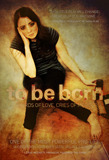 To Be Born
To Be Born
Based on a famous story by a Catholic priest, this is a compelling, visually gripping new film about a young woman faced with an unplanned pregnancy who is pressured to have an abortion. At the start of the abortion procedure, she finds herself in a mysterious situation as she hears her unborn daughter cry out to her mother, describing the chilling details of what is happening to her, and how she wants to live and love. Will the mother go through with the destruction of her child, or listen to her plea for love and life before its too late?
The film is based on "A Letter from an Aborted Child," which had been used for nearly 10 years by Father Stephen Lesniewski to show women in a time of indecision about an unplanned pregnancy. He estimates that over 500 babies have been saved because of his efforts in utilizing the powerful letter. Because of its great success, Fr. Stephen decided to have a film produced with the hope that the overall message would reach an even larger audience.
Regular price: $14.95, sale price: $11.96
Catholic World Report
“The Best Books I Read in 2013”
By CWR Staff
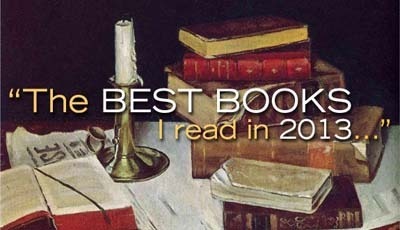
Featuring contributions from Dana Gioia, Anthony Esolen, Thomas Howard, Michael Coren, Joseph Pearce, James V. Schall, Brandon Vogt, and many more.
“Everywhere have I sought rest and found it not, except sitting apart in a nook with a little book.” — Thomas a Kempis
Our first “Best Books I Read in…” compilation appeared nine years ago on Ignatius Insight and it has grown in both popularity and length each year. This year we have nearly 40 entries (if my blurry vision can be trusted), all from CWR contributors, editors, and friends, each of whom was asked to respond to the simple question, “What were the best books you read in the past year?” The books chosen did not have to be published in 2013, nor did they have to be about a specific topic. So, pull up a chair—or find a nook—and prepare to discover a few new books. — Carl E. Olson, editor
Keep reading...
Homiletic and Pastoral Review
Vanishing Catholics
By Fr. William P. Clark, OMI
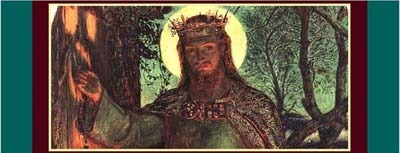
According to recent demographic surveys, it seems there are presently 30 million people in the U.S. who identify themselves as “former Catholics.” That figure is both surprising, and, for Catholics, disheartening.
Over the past 50 years or so, a profound change, other than that effected by Vatican II, has taken place in the Catholic Church. It might be described as the phenomenon of “vanishing Catholics.” The Canadian philosopher, Charles Taylor, has identified four major challenges facing the Church today. First on his list is the exodus of young adults from the Church. According to recent demographic surveys, it seems there are... Keep reading
Copyright © 2014 Ignatius Press, All rights reserved.
Milton Walsh on the "The Joy of Dogma"
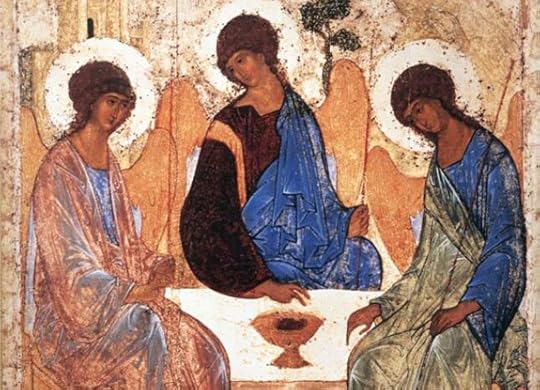
Milton Walsh is the author several books, including Into All Truth: What Catholics Believe and Why, In Memory of Me: A Meditation on the Roman Canon, and Second Friends: C.S. Lewis and Ronald Knox in Conversation. In an essay titled, "The Joy of Dogma," he discusses his most recent book, Into All Truth: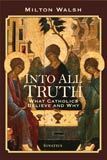
The Sunday morning homily cannot address the teachings of the Church in depth. The Catechism of the Catholic Church is a tremendous resource, but a daunting one. What I felt we needed was a roadmap through the first part of the Catechism, which deals with the faith of the Church. To the end, I have written Into All Truth: What Catholics Believe, and Why. I was tempted to call the book The Joy of Dogma because the faith of the Church is truly good news, the truth that sets us free. This book is intended for the general reader, Catholic and non-Catholic alike, and briefly summarizes what we believe, how our understanding of the faith has matured over the centuries, and what it means for our daily lives.
The foundation of the Christian faith is the dogma of the Trinity. This truth is fundamental, but also bewildering -- how to approach it? I decided to enter "into the mystery of the Trinity" in part one by replicating the process by which this truth gradually emerged. Unlike the Koran (or the Book of Mormon), the Christian faith was not revealed by a single sacred text imparted at a moment in time; even the table of contents of the Bible grew over many centuries. How did we come to profess (as millions of Christians do every Sunday when they recite the Creed) that there are three Persons in one God, and what difference should that make for us?
I start my story where most stories end: at a tomb. As the great apologist Ronald Knox once wrote: "The message that electrified the first century was not, 'Love your enemies,' but, 'He is risen.'" The disciples, shocked and despondent after the horrendous and humiliating crucifixion of their Master, found his tomb empty and met the risen Christ. More than resuscitated, he was radically transformed in a glorified human nature, the new Adam of a new human race.
These startling encounters changed the fearful disciples into bold evangelists, confidently asserting Christ's Resurrection in the very city where he had been executed. This event led them to re-examine the meaning of his death: far from being the tragic interruption of a fruitful ministry, it had been the goal of Jesus' life and the means of our salvation. This in turn prompted them to revisit a question -- indeed, the question -- Jesus had put to them earlier: "Who do you say that I am?" The answer was that Jesus was truly our brother, a human being like us, but also Emmanuel, God-with-us, in a way whose literalness defies our limited imagination. From the understanding that the Son is truly God, and the Holy Spirit whom he sent from the Father is also God, the dogma of the Trinity gradually took shape.
Read the entire essay on the Real Clear Religion site.
January 9, 2014
The Twelve Most Read CWR Stories of 2013
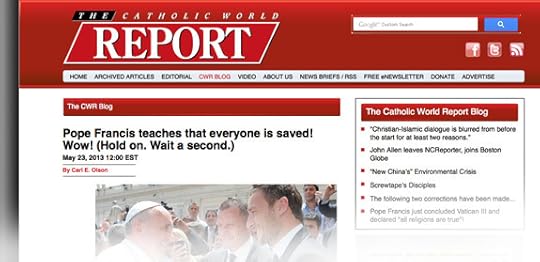
by Carl E. Olson, Editor of Catholic World Report
If I had been asked a few days ago, “What CWR articles were mostly widely read and viewed in 2013?’, I would guess that articles about the resignation of Benedict XVI and the election of Francis led the way.
And I would be wrong.
Two of CWR’s most read stories of 2013 were about Pope Francis, but the top story—and by a surprisingly large margin—was a September blog post by Italian journalist Alessandra Nucci about Trappist nuns in Syria.
And Nucci’s piece on the charismatic renewal movement is next, followed by pieces about in vitro fertilization, marriage and homosexuality, Pope Francis’ teaching about salvation, comedian Jim Gaffigan, the new pontiff’s coat of arms, Satanism, Islam,The Great Gatsby, churches in Chicago, and the challenge of internal division in the Church.
Here they are, with authors, dates, and links:
1. A letter from Trappist nuns in Syria: “Blood fills our streets, our eyes, our hearts” (Sept 1, 2013) — by Alessandra Nucci. A translation of a letter written on the 29th of August, in which a small groups of Trappist sisters, who moved to Syria in 2005, describe their dire situation and wonder at what Western leaders will or will not do.
2. The Charismatic Renewal and the Catholic Church (May 18, 2013) — by Alessandra Nucci. A look at the history and future of the sometimes-controversial movement
3. Church teaching on in vitro fertilization (Nov. 29, 2012) — by Jim Graves. A short description of what the Church teaches on the matter, drawing a steady stream of readers from the time it was posted in late 2012.
4. Jesus, Marriage, and Homosexuality (June 29, 2013) — by Leroy Huizenga. About how the early Christians, following the lead of Jesus, doubled down on traditional Jewish sexual morality.
5. Pope Francis teaches that everyone is saved! Wow! (Hold on. Wait a second.) (May 23, 2013) — by Carl E. Olson. Did the new pontiff break radical new ground in comments about redemption?
6. Jim Gaffigan on Fatherhood for the Recovering Narcissist (Aug 07, 2013) — by Thomas P. Harmon. A review of the comedian’s new book, Dad is Fat, which has a delightfully subversive message on fatherhood and the family.
7. Pope Francis’ coat of arms and motto, explained (Mar 18, 2013) — by Catherine Harmon. Exactly what the title says; apparently there are more than a few coat of arms enthusiasts out there.
8. “Satanism is about destroying the Church” (Mar 25, 2013) — by Jim Graves. The story of a woman who journeyed from Satanism to the Occult and back to the Catholic Church, eventually finding hope and healing through Christ and the sacraments.
9. Christianity and Islam: Cooperation or Conflict? (Apr 21, 2013) — by William Kilpatrick. A review of Robert Spencer's book, Not Peace But a Sword: The Great Chasm Between Christianity and Islam.
10. How Great is This Gatsby? (May 22, 2013) — by Thomas M. Doran. A review of Baz Luhrmann’s new film adaptation of F. Scott Fitzgerald’s The Great Gatsby.
11. Eleven Churches Not to Miss When You Visit Chicago (July 20, 2012) — by Jim Graves. In a city shaped by immigrant communities, beautiful historic churches reflect the faith and hard work of generations of Catholics.
12. A Diabolical, Nostalgic Plan (Oct. 24, 2013) — by Michael Coren. "Division. We love it, we relish it, we eat and drink it, we splash around in the bath of it."
January 8, 2014
Life, Literature, and the Horror of Abortion
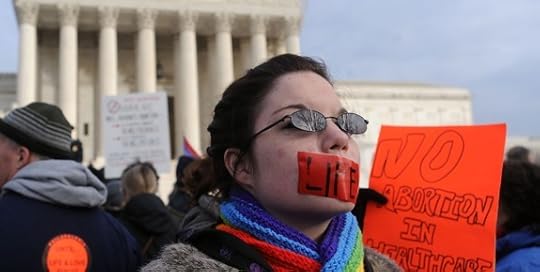
Tina Plummer, of Westfield, Ind., demonstrates in front of the Supreme Court building in Washington during the March for Life Jan. 22, 2010. (CNS photo/Peter Lockley)
Life, Literature, and the Horror of Abortion | Christopher White | Catholic World Report
An interview with Edward Short, author of Culture and Abortion
In his new book, Culture and Abortion (Gracewing, 2013), Edward Short examines the evil of abortion through the lens of literature and culture. “What I have sought to do,” he writes in the introduction, is “to see if some aspects of culture—which is to say works of poetry, history, criticism, fiction, and the encyclicals of popes—could help make sense of this life-destroying notion, though another and perhaps more important purpose was to argue that in order to end the evil of abortion we need a revival of culture, true culture.”
Short, who lives in New York with his wife and daughter, spoke recently with Catholic World Report about his book.
CWR: There’s been an abundance of writing on the horrors of abortion over the past four decades. Most of the writing on this topic deals with the poor legal arguments that buttress abortion rights, the emotional or physical damage to women, and the scientific evidence that life begins at conception. You, however, take a different approach and examine the type of culture that allows for abortion. Why is this important?
Edward Short: In Culture and Abortion, I do three things. I put abortion in some historical context by showing how the pro-abortion assumptions that animate our society would strike previous societies, most of which recognized children, born and unborn, as gifts from God, not playthings of expedience.
Secondly, I look closely at why our own culture sees fit to reject the gift of life.
And lastly I show how life-affirming poets, popes, saints, abolitionists, novelists, historians, and other truth-tellers can help us to restore what ought to be the pro-life heart of our own culture. All these are important because they help us see how our own culture has become a travesty of culture, one which is antagonistic not only to civilization but to life itself.
The sooner we re-humanize our culture the sooner we can begin to show abortion the door, though I insist in the book that we can only do this by showing our neighbors the vital relationship between the creature and the Creator, which is at the heart of the inviolability of life. Natural law arguments are not enough. To defend the sanctity of life we must witness to the reality of God’s love, which comes to us anew in every gift of every child.
CWR: In Culture and Abortion you introduce a number of literary figures who have offered serious contributions to promoting a culture of life. How have works of literature been important in this regard?
Walk for Life West Coast quickly approaches!
Features more dynamic pro-life events than ever
SAN FRANCISCO, January 7, 2014 – Walk for Life West Coast plans are in full swing, as organizers prepare for what they hope to be the largest Walk yet. The 10th Annual Walk for Life West Coast will be held at San Francisco’s Civic Center on January 25, 2014.
Speakers include Shari Rigby, actress in the film October Baby; Grace Dulaney, founder of the Agnus Dei Foundation; Monica Snyder, a representative of Secular Pro-Life; and Rev. Clenard Childress, founder and director of www.BlackGenocide.org. In addition, the Silent No More Post-Abortion Awareness Campaign, an important part of the Walk since its founding, will once again offer a program of testimony from abortion survivors and post-abortion healing prior to the rally.
Organizers are also happy to announce that there will be three powerful pro-life events related to the Walk, all of which will take place at St. Mary’s Cathedral in San Francisco:
• The Law of Life Summit West on Friday January 24, which is sponsored by the Life Legal Defense Foundation.
• A Sidewalk Counselor Training session with Abby Johnson, author of Unplanned and former Planned Parenthood employee, on Saturday, January 25, following the Walk.
• The first Students for Life of America conference to be held on the west coast on January 26.
Founded in 2005 by a group of San Francisco Bay Area residents, the Walk for Life West Coast’s mission is to change the perceptions of a society that thinks abortion is an answer. Walk participants are expected from throughout the Bay Area and across the United States and Canada.
For complete details about the Walk for Life and all related pro-life events, please visit: www.walkforlifewc.com
To set up an interview with any of the Walk for Life West Coast’s dynamic speakers or event organizers, please contact:
Rose Trabbic, Publicist, Walk for Life West Coast, media@walkforlifewc.com or (239)867-4180
Below is a video from the Walk for Life site promoting the 2014 event:
January 7, 2014
Screwtape’s Disciples
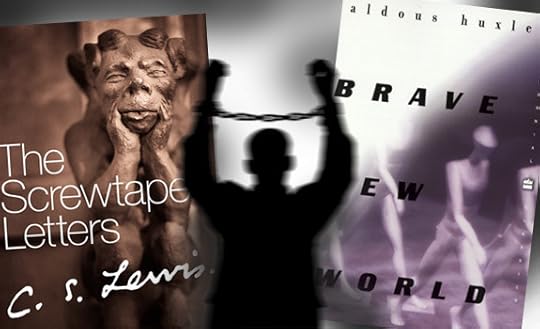
Screwtape’s Disciples | Thomas M. Doran | CWR blog
How can the many brave new worlders be defeated?
At first glance, the Jacobins, Marxists, Nazis, rapacious industrial and financial oligarchs, and modern jihadists have little in common. Weren’t the Jacobin revolutionaries democracy’s standard bearers? Weren’t they guided by reason and Enlightenment principles? Aren’t Marxists, past and present, social scientists opposed to oppression by the aristocracy and capitalist robber barons, striving to end class conflict? Weren’t the Nazis an inevitable product of oppressive WWI unconditional surrender terms? Aren’t industrial and financial oligarchs entrepreneurs and community builders? Aren’t modern jihadists seeking retributive justice for historically oppressed Muslims?
“An attractive end justifies messy means.”
This end? A brave new world, requiring destruction for re-construction, requiring the elimination of an ethos of self-donation, self-sacrifice, and self-identification with the Jesus of the Gospels, all so that man can progress.
J.R.R. Tolkien depicts angels who are fair-seeming, compelling in speech, and reasonable, so much so that many men are lured into their orbit, and eventually enslaved. Sauron and Saruman weren’t created to be the tyrants they later become. Nonetheless, angels they were and angels they remain, though fallen.
The Lord of The Rings is just a story isn’t it: adventure, fantasy, fiction, mythology? Actually, The Lord of The Rings, along with C.S. Lewis’ The Screwtape Letters describes how man is tempted, and sometimes corrupted, by fallen angels…devils.
January 6, 2014
Pope Francis, Economics, and Poverty |

Pope Francis, Economics, and Poverty | Fr. James V. Schall, S.J. | CWR
Comments made by Cardinal Bergoglio in 2010 shed light on his understanding of capitalism, work, and the poor
“The free-will actions of human beings, in addition to our own individual responsibility, have far-reaching consequences: they generate structures that endure over time and create a climate in which certain values can either occupy a central place in public life or be marginalized from the reigning culture. And this too falls under the moral sphere.”— Cardinal Jorge Bergoglio, 2010.
“What happens is that the unemployed, in their hours of solitude, feel miserable because they are not ‘earning their living.’ That is why it is very important that governments of all countries, through the relevant ministries and departments, cultivate a culture of work, not of charity…. They have to cultivate sources of work because, and I never tire of repeating, this, work confers dignity.” — Cardinal Jorge Bergoglio, 2010.
I.
The two major criticisms concerning the perceived economic thought of the current pope are these: 1) that he does not understand how normal capitalism functions with its relation to the poor, and 2) that he habitually relies on the state for solutions, when the modern state is usually a major part of the problem. In a homily in the Chapel of Santa Marta (November 5), however, Pope Francis talked of state officials who lose their dignity by taking bribes. On November 11, the Pope spoke of the man who “puts one hand in his pocket that helps the Church, while, with the other hand, he robs the State and the poor.” No doubt, political and bureaucratic corruption in the form of bribes and favoritism is a major cause of poverty and injustices in the world today, not just for the poor. Few say so as bluntly as Pope Francis.
The Pope has spoken of “unbridled capitalism,” which seems strange. Capitalism today is almost totally bridled by extensive state control. We do have a global flow of capital seeking a place to invest. This financial power can be misused and too often is. But it is also one of the great generators of economic growth. “Unbridled capitalism,” if it exists, is much less a problem than the state-controlled capitalism when it comes to impediments for increasing wealth and labor possibilities for the poor. Moreover, as The Economist (June 1) wrote, the world in fact has recently made enormous strides in the world-wide alleviation of poverty, due mostly to capitalism and its imitators. I have not seen any mention of this fact in any of the Pope’s discussion of remaining world poverty. Both political corruption and government controls are more harmful to the poor than so-called “unbridled capitalism.” This fact also needs to be stated.
The Pope often speaks of a “throw-away” society, something like the “consumer” society that John Paul II used to chastise. But just what are the consequences of not throwing useless or outmoded things away or not having the free demand that causes investment and employment? To prohibit a “throw-away society” seems close to mandating a stagnate economy in which what is inefficient or useless is legally kept functioning at higher and higher costs in the name of jobs or ecology. Innovation that would change things is stifled. The sources of growth flee the jurisdictions that prevent its growth. This movement, in fact, explains much of the economic gains of many poorer nations in the world today, particularly in Asia.
The Pope is likewise famous for having remarked that the greatest problems in today’s world are “unemployed youth and loneliness in old age.” Yet, we cannot talk of unemployed youth without talking about what really causes the jobs they need to employ them.
January 5, 2014
Wise Men from the East

Wise Men from the East | Sandra Miesel | The Feast of the Epiphany of the Lord
We Three Kings of Orient are,
Bearing gifts we traverse afar. . . .
Who were these gift-bearing kings, these Wise Men of the East? What has their mission meant to Christians across the ages?
The Wise Men—not yet called kings—make only a single appearance in Holy Scripture. St. Matthew's Gospel (Mt 2:1-12) tells of their arrival in Jerusalem shortly after the birth of Jesus. They have come seeking the newborn King of the Jews because they had seen his star rise in the East. Herod, the current ruler, knows nothing of an upstart princeling but learns that prophecies place him in Bethlehem. Herod directs the Wise Men to search there for the Child and keep him informed. Following their star, the Wise Men find Jesus with his Mother. They worship him and bestow gifts of gold, frankincense, and myrrh. Warned by an angel, they do not reveal the Child's location to jealous Herod but return secretly to their own land.
In ancient texts of Scripture the Wise Men are Magoi in Greek and Magi in Latin. The singular form, Magos/Magus, is the source of our English word "magician" but had multiple meanings in Biblical times. A magus could be a Zoroastrian priest from Persia, an occultist, a magician, or a charlatan. Because the New Testament Magi study the stars, their mystic wisdom presumably includes astrology. Hence some recent Bible translations call them "astrologers," a less evocative term than the more traditional "Wise Men."
Some early Christians equated the Magi with Chaldean star-readers from Babylon, masters of the occult familiar throughout the Roman Empire. St. Justin Martyr and Tertullian thought they were Arabians but most believers in Patristic times took their Persian origin for granted.
Church Fathers were quick to see deeper symbolism in this curious episode, first through its Old Testament parallels. Origen suggested that the Magi were descendants of the pagan prophet Balaam who had predicted that "a star shall rise out of Jacob" (Num. 24:17). Other Old Testament figures including the priest-king Melchizedek (Gen. 14:18-20), the generous Queen of Sheba (1 Kgs. 10), and the faithful Three Young Men in the Fiery Furnace (Dan. 3) were also seen as counterparts of the Wise Men from the East.
Strangers who worship the new King of Judah and bring gifts fulfill Messianic prophecies. "The kings of Tarshish and the Isles shall offer gifts; the kings of Arabia and Seba shall bring tribute" (Ps. 72:10). "All they from Sheba shall come, bearing gold and frankincense, and proclaiming the praises of the Lord." (Isa. 60:6) Because the Scriptures speak of tributary kings, Tertullian called the Magi kings. Origen specified that they numbered three to match their gifts and their named kingdoms. St. John Chrysostom preached about twelve Wise Men but his interpretation failed to find favor.
These foreigners, the first Gentiles to see the Light, recognize what Herod and the Temple priesthood cannot: the newborn Savior. The wealthy, learned, alien Magi of St. Matthew's Gospel complement the poor, ignorant, local shepherds of St Luke's Gospel. Foreshadowing the universality of the Church, these Gentiles and Jews worship God Incarnate to show that salvation is offered to all men.
St. Irenaeus of Lyons was the first Church Father to equate the Wise Men's gifts of gold, frankincense, and myrrh with Christ's roles as King, God, and Sacrifice. This became the dominant reading, still familiar through the beautiful Victorian Christmas carol, "We Three Kings of Orient Are." But other interpretations also appeared in which the gifts stand for the virtues of faith, chastity, and purity of heart or else for almsgiving, prayer, and mortification.
The Christ Child's adoration by the Magi is known as his Epiphany ("Manifestation") because it announces his mission to redeem the world. Ancient Christendom spoke of multiple manifestations (initially including the Nativity) by linking the revelation of the newborn Christ with his later baptism in the Jordan and his first miracle at Cana. These key points in his mission, which were imagined to have occurred on the same calendar date, also used to be celebrated in the pre-Vatican II Roman breviary. As an Epiphany antiphon at Vespers proclaims, "We honor the holy day adorned with three miracles: today the star led the Magi to the crib: today wine was made from water for a wedding: today Christ willed to be baptized by John in the Jordan." In medieval Europe, Epiphany was often connected with the miracle of the loaves and fishes and with the raising of Lazarus.

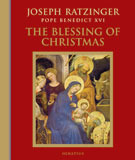
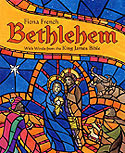
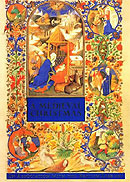

The traditional date of Epiphany is January 6th although in some places, including the United States, the feast is transferred to the nearest Sunday. Epiphany is an older feast than Christmas for it is attested in the East from the first half of the third century, at least 75 years before Christmas is mentioned as a holy day in Rome.
By the late fourth century Christmas was also being celebrated in the East so Epiphany lost its Nativity connection there. The Baptism of the Lord became the chief focus of Epiphany and the subject of its special feast day icon. The public manifestation of Christ as the Divine "beloved Son" outranked the private homage of the Magi, who were relegated to the background of Nativity icons.
Nevertheless, the Adoration of the Magi has been a popular subject for artists since Late Antiquity. The earliest surviving examples are catacomb paintings from the second and third centuries and carvings on stone coffins from the first half of the fourth century. On the coffins, three nearly identical Magi process toward the enthroned Madonna and Child. Their gifts allude to the alms the deceased person had given in his lifetime. Famous mosaics depicting the Magi also appear in the churches of S. Maria Maggiore in Rome (440) and S. Apollinare Nuovo in Ravenna (561). The Magi are represented in exotic "Eastern" garb, wearing tunics, leggings, and soft peaked caps. They observe imperial Roman court etiquette by presenting their gifts with covered hands or on trays. The gold is often in the form of a royal wreath and the star appears as an emblem of divine kingship.
By the tenth century, Western artists are portraying the Wise Men with crowns. They grow distinguishable because they have come to stand for the three ages of man, the three known continents of the Old World, and three races descended from the sons of Noah. In later medieval art the Magi lay aside their crowns to interact with the Christ Child and receive his blessing. Their garments become increasingly fantastic and their faces are often modeled on contemporary rulers. By the fourteenth century, the youngest Magus is portrayed as a black African in many Northern European paintings. In subsequent centuries, other racial types joined the trio, including East Indians, Asians, Incas, and Canadian Indians, so that the Wise Men could represent all nations.
The thirteenth century Golden Legend gives the Magi's names in Greek as Apellius, Amerius, and Damascus; in Hebrew as Galgalat, Malgalat, and Serchin; and in Latin as Caspar, Balthasar, and Melchior—the favorite set. There are inconsistencies about which Magus is which but in Germanic lands, Casper (gold) is elderly; Melchior (frankincense) is middle-aged; and Balthasar (myrrh) is young. The gifts are presented in order of age.
The center of the Magi's cult is Cologne. The cathedral there boasts a splendid golden shrine holding their relics that has drawn swarms of pilgrims since the twelfth century. The Kings' protection is traditionally invoked against travel dangers, plague, fever, and sudden death. Their initials C+M+B form a protective acronym for Christus mundum benedicat ("Christ blesses the world"). The faithful carry this symbol on holy cards or chalk it over their doors to ward off evil.
The alleged remains of the Magi are claimed to have been discovered in the East by St. Helena and brought to Milan in 400, whence they were looted by Frederick Barbarossa in 1162 and given to Cologne. Historian Patrick Geary has argued persuasively that Milan never had any relics of the Wise Men. Yet the bones in the shrine were wrapped in genuine purple silk from St. Helena's lifetime so some ancient parties unknown have been passing as the Magi for eight centuries.
Regardless of authenticity, the Three Holy Kings have had great cultural impact on Cologne as the city's male patron saints. Their crowns appear on the arms and banner of the city as well as on the seals of her archbishop and university. The Magi themselves bear heraldic arms. Caspar's are a golden star and crescent on a blue field; Melchior's six gold stars on a blue field, and Balthasar's a red-clad Moor holding a lance with pennant on a golden field.
Thus Scripture and legend have combined to honor the Wise Men of the East as universal symbols of mankind adoring God Incarnate. May these first pilgrims who traveled by the light of a star "guide us to the Perfect Light."
Originally published in the Catholic Herald newspaper, January 2007. Reprinted by permission of the author.
Related IgnatiusInsight.com Articles on Advent and Christmas:
• CHRISTMAS, 2008 | Fr. James V. Schall, S.J.
• What In Christmas Season Grows: On the Days Leading Up to the Nativity of the Lord | Fr. James V. Schall, S.J.
• Turn Your Hearts! | A Homily for the Second Sunday of Advent | Fr. Kenneth Baker, S.J.
• The Perfect Faith of the Blessed Virgin | Carl E. Olson
• Come, Lord Jesus! The Meaning of Advent | Fr. Kenneth Baker, S.J.
• Mary Immaculate | Fr. Kenneth Baker, S.J.
• Archbishop Fulton Sheen on Advent | From Through the Year With Fulton Sheen
• Mary's Gift of Self Points the Way | Carl E. Olson
• Immaculate Mary, Matchless in Grace | John Saward
• The Medieval Mary | The Introduction to Mary in the Middle Ages | by Luigi Gambero
• The Mystery Made Present To Us | Fr. Alfred Delp, S.J.
• Remembering Father Alfred Delp, S.J., Priest and Martyr | A Conversation with Father Karl Adolf Kreuser, S.J.
• Assumed Into Mother's Arms | Carl E. Olson
• The Disciple Contemplates the Mother | Erasmo Leiva-Merikakis
• The Incarnation | Frank Sheed
• "Born of the Virgin Mary" | Paul Claudel
• The Old Testament and the Messianic Hope | Thomas Storck
• Christmas: Sign of Contradiction, Season of Redemption | Fr. James V. Schall, S.J.
• The God in the Cave | G.K. Chesterton
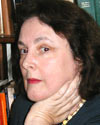 Sandra Miesel is the co-author, with Pete Vere, of Pied Piper of Atheism: Philip Pullman and Children's Fantasy and co-author, with Carl E. Olson, of the best selling The Da Vinci Hoax: Exposing the Errors in The Da Vinci Code. She holds masters’ degrees in biochemistry and medieval history from the University of Illinois.
Sandra Miesel is the co-author, with Pete Vere, of Pied Piper of Atheism: Philip Pullman and Children's Fantasy and co-author, with Carl E. Olson, of the best selling The Da Vinci Hoax: Exposing the Errors in The Da Vinci Code. She holds masters’ degrees in biochemistry and medieval history from the University of Illinois.
Since 1983, she has written hundreds of articles for the Catholic press, chiefly on history, art, and hagiography. She regularly appears in Crisis magazine and is a columnist for the diocesan paper of Norwich, Connecticut. Sandra has spoken at religious and academic conferences, appeared on EWTN, and given numerous radio interviews. Outside the Catholic sphere, she has also written, analyzed, and edited fiction. Sandra and her late husband John raised three children.
January 4, 2014
The Incarnation and the Call to Worship
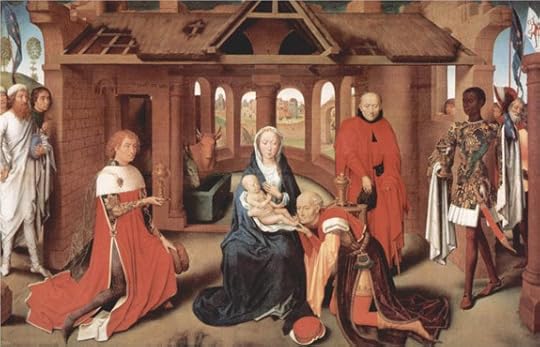
"Adoration of the Magi" by Hans Memling (1472)
A Scriptural Reflection on the Readings for Sunday, January 5, 2014, Solemnity of the Epiphany of the Lord | Carl E. Olson
Readings:
• Isa 60:1-6
• Ps 72:1-2, 7-8, 10-11, 12-13
• Eph 3:2-3a, 5-6
• Mt 2:1-12
“Worship”, observed Fr. Gerald Vann, O.P., “is not a part of the Christian life: it is the Christian life.” Fr. Hans Urs von Balthasar, in a sermon given on the Solemnity of the Epiphany of the Lord, wrote that God, in his epiphany, “has lost nothing of his incomprehensibility. Only now do we begin to suspect how far divine omnipotence reaches into reality. Thus there can be no more profound worship than Christian worship, which is authentic.”
Today’s solemnity is a celebration of the epiphaneia—the revelation and manifestation—of God in the form of a man, Jesus the Christ. Throughout the centuries, beginning in the East and the later in the West, this feast focused on three different but closely related events: the visitation of the Magi, the baptism of Jesus in the Jordan, and the turning of water into wine at the wedding feast of Cana.
Each reveals the radical, transforming truth of the Incarnation. And each, in turn, opens up further the mystery of God and calls man to worship and adore him.
The mystery of the Incarnation and the call to worship are central in today’s Gospel, which recounts the well-known story of the magi from the east seeking “the newborn king of the Jews.” The magi are among the most mysterious figures in the Gospel; we don’t even know how many journeyed to find Jesus, although the total of three has become the popular number. In the ancient Near East a magus could have been one of several things: a magician, a Persian priest, or even a man practicing occultic arts. But these men were most likely Persian astrologers, with a reputation for being skilled at studying and interpreting the movements of the stars and planets.
St. Matthew’s Gospel often refers to Old Testament prophecies that were fulfilled in and through the coming of Christ (Mt. 2:17, 23; 4:14; 13:14; 27:9). In writing of the magi, he pointed his readers to Isaiah 60, today’s reading from the Old Testament. There the prophet Isaiah wrote of a coming time when the glory of Jerusalem would fill and bless the entire word: “Nations shall walk by your light, and kings by your shining radiance.” The wealth of nations—including gifts of “gold and frankincense—would be brought by foreign kings, who would worship God in the holy city, “proclaiming the praises of the Lord.” And today’s responsorial Psalm also emphasizes this theme of worship: “May the kings of Tarshish and the islands bring tribute, the kings of Arabia and Seba offer gifts. May all kings bow before him, all nations serve him” (Ps. 72:10-11).
This highlights a truth often proclaimed by Jesus: that the Kingdom of God is offered to and will include peoples from all nations. And the magi represent the first of a vast number of Gentiles brought into the family of God through the Christ-child, who is the King of the Jews and the King of kings. Even in his quiet and hidden birth, Jesus began to draw all men to himself.
“In the magi,” the Catechism states, “representatives of the neighbouring pagan religions, the Gospel sees the first-fruits of the nations, who welcome the good news of salvation through the Incarnation” (par. 528). In the New Covenant the radiant glory of the Lord will shine upon all people, dispelling the darkness of sin and despair.
The actions and responses of the magi reveal how the divine light destroys the darkness and leads to worship of the true God. First, they saw the star and recognized that is was unique. Secondly, upon having this epiphany (itself a divine gift of grace), they traveled in order “to do him homage”. They had no fear of seeking the newborn king of the Jews because they were filled with joy and anticipation. Third, they into the presence of Jesus and “prostrated themselves and did him homage.”
Having worshiped him, they offered gifts. We, too, are called to worship, for worship is the Christian life.
(This "Opening the Word" column originally appeared in the January 2, 2011, issue of Our Sunday Visitor newspaper.)
A Word About Words—and 2013
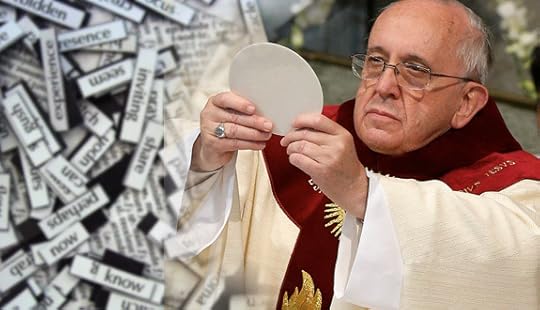
A Word About Words—and 2013 | Carl E. Olson | Editorial | Catholic World Report
Our world is full of promises, plans, policies, and pleas, making it hard to hear just one Word
“Everything is simpler than you think,” wrote Goethe, “and at the same time more complex than you imagined.”
Those are words worth keeping in mind when trying to assess a particular stretch of time such as The Year of 2013. Any such assessment or summary is fraught with inevitable challenges, one of them expressed many centuries ago, according to the Oxford English Dictionary, as follows: “I see, ye can not see the wood for trees.”
Or, in the words of the great philosopher and martial artist Morpheus: “The Matrix is everywhere. It is all around us. Even now, in this very room. You can see it when you look out your window or when you turn on your television. You can feel it when you go to work... when you go to church... when you pay your taxes. It is the world that has been pulled over your eyes to blind you from the truth.”
Granted, there are serious problems, to state the obvious, with the pseudo-Buddhist and neo-gnostic premises of The Matrix. My point is that we are so deeply immersed in a particular time, place, culture, and sea of rhetorical cues and influences, that we—to mix my metaphors in order to stir my editorial drink—struggle to see the forest for the trees. To remake another famous epigram, if a tree stands in a forest, and no one can see the forest, is the tree really standing?
When I think back on the past year, I am struck, again and again, by the power of words. It's not simply because I work with words, but because words shape and direct our lives far more than we might ever be able to fathom, whether they are the words of politicians and popes, or the utterances of reporters and celebrities.
Language is powerful. In the words of the great philosopher Josef Pieper, in his short and brilliant book, Abuse of Language, Abuse of Power (Ignatius, 1992):
Word and language, in essence, do not constitute a specific or specialized area; they are not a particular discipline or field. No, word and language form the medium that that sustains the common existence of the human spirit as such. The reality of the word in eminent ways makes existential interaction happen. And so, if the word becomes corrupted, human existence itself will not remain unaffected and untainted. ... words convey reality. We speak in order to name and identify something that is real, to identify it for someone, of course ...
A few pages later, Pieper noted, “Public discourse itself, separated from the standard of truth, creates on its part, the more it prevails, an atmosphere of epidemic proneness and vulnerability to the reign of the tyrant”. Apply that to current events as you wish, but have no doubts about how applicable it really is. And I would suggest that the past year demonstrated there are plenty of tyrants to found, not the least of them the ancient tyrants of cynicism, despair, and fear.
Trust me, as I speak from personal experience. I've found it quite difficult, at times, to stave off the assaults of cynicism, which has been helpfully defined in one dictionary as “an attitude of scornful or jaded negativity, especially a general distrust of the integrity or professed motives of others.” I've found that the line between healthy skepticism and cynicism can be incredibly thin.
Which is one reason, frankly, that I've not yet written too much about the furor and controversies over the Most Discussed But Least Read Papal Text in Recent Memory: Evangelii Gaudium (oops—I think my cup of cynicism is already spilling onto the page). First, I am as shocked as anyone that Pope Francis wrote a 52,000-word long document about the economy. What was he thinking? Lest you think I'm merely being snarky—I am, but not merely—it should be noted that the Apostolic Exhortation is indeed all about the most important economy of all: the economy of salvation. (After all, it is titled, “The Joy of the Gospel,” not “The Failure of Free Markets”.)
Blessed John Paul II, in Redemptoris Missio, his 1990 encyclical on the Church's missionary mandate, wrote:
Carl E. Olson's Blog
- Carl E. Olson's profile
- 20 followers



